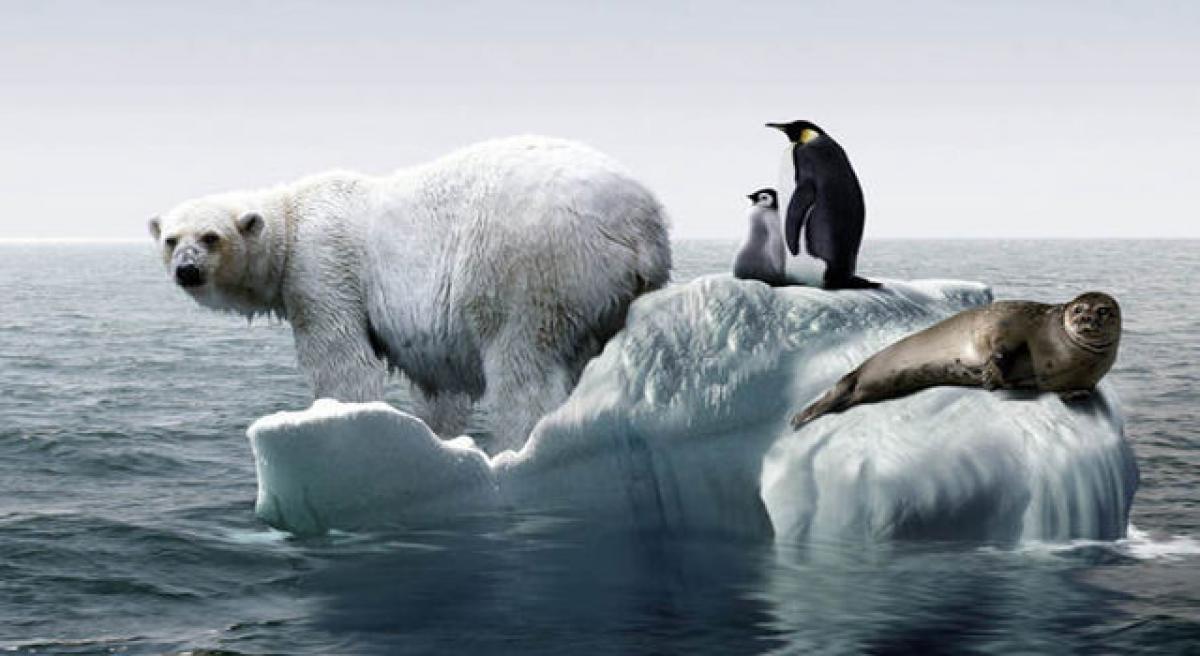Live
- Tender to be called for new gates to TB dam in January
- TTD EO inspects Tiruchanoor Brahmotsavam arrangements
- Crisis grips Davanagere farmers despite bumper crop
- NSU probes drug use incident
- Yathindra Siddaramaiah’s statement on judiciary sparks petition for contempt of court
- Initiate steps for implementation of GER: Minister Anam
- Mammootty and Mohanlal to Team Up for Their 50th Film Together
- CAG points out increasing debts during 2022-23
- Youth Commits Suicide in Srikalahasti
- MeT department advises TN fishermen to avoid deep sea fishing
Just In

Climate change is threatening to release hazardous radioactive waste from an abandoned camp thought to be buried forever in the Greenland Ice Sheet, new research has found.
Toronto: Climate change is threatening to release hazardous radioactive waste from an abandoned camp thought to be buried forever in the Greenland Ice Sheet, new research has found.
Camp Century, a US military base built within the Greenland ice sheet in 1959, doubled as a top-secret site for testing the feasibility of deploying nuclear missiles from the Arctic during the Cold War.
When the camp was decommissioned in 1967, its infrastructure and waste were abandoned under the assumption they would be entombed forever by perpetual snowfall.
"Two generations ago, people were interring waste in different areas of the world, and now climate change is modifying those sites," said the lead author of the study, William Colgan of Toronto's York University.
"It's a new breed of climate change challenge we have to think about," Colgan noted. Climate change has warmed the Arctic more than any other region on Earth and new research has found that the portion of the ice sheet covering Camp Century could start to melt by the end of the century.
If the ice melts, the camp's infrastructure, as well as any remaining biological, chemical and radioactive waste, could re-enter the environment and potentially disrupt nearby ecosystems, the study authors said.
The wastes would not remain encased in ice forever, as was assumed by both the US and Denmark when the camp was abandoned. Determining who is responsible for cleaning up the waste could also lead to political disputes not considered before, Colgan said.
The study's team took an inventory of the wastes at Camp Century and ran climate model simulations. The researchers also analysed historical US army engineering documents to determine where and how deep the wastes were buried and how much that part of the ice cap had moved since the 1960s.
They found the waste at Camp Century covers 55 hectares, roughly the size of 100 football fields. They estimated that the site contains 200,000 litres of diesel fuel, enough for a car to circle the globe 80 times, and 240,000 litres of waste water, including sewage.
Based on building materials used in the Arctic at the time, the authors speculate the site contains polychlorinated biphenyls (PCBs), pollutants toxic to human health, along with an unknown volume of low-level radioactive coolant from the nuclear generator.
Camp Century's waste presents a non-trivial environmental hazard, said Colgan. When the ice melts, pollutants could be transported to the ocean, where they could disrupt marine ecosystems, said the study published in Geophysical Research Letters, a journal of the American Geophysical Union.

© 2024 Hyderabad Media House Limited/The Hans India. All rights reserved. Powered by hocalwire.com







